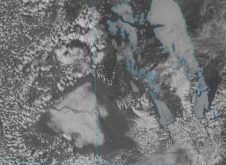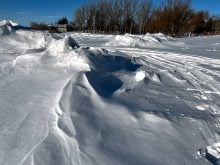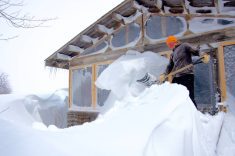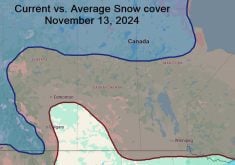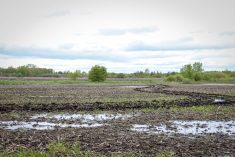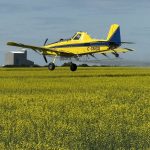Asilent threat lurking in the snow-covered uplands of the Red River basin has officials warning residents to brace for a major flood this spring.
High river flows, above-normal water content in the snowpack and an expected cool, wet spring will produce near-record flood conditions along the Red River, Manitoba Water Stewardship announced Monday.
The province’s first flood outlook for 2011 predicts a 2009-level flood on the Red this spring, assuming average weather. Unfavourable weather could produce a flood of 1997 levels.
The 1997 so-called Flood of the Century was the worst since the 1800s and 2009 was the second worst.
Read Also

June brings drought relief to western Prairies
Farmers on the Canadian Prairies saw more rain in June than they did earlier in the 2025 growing season
The flood potential is also high along other major Manitoba waterways, including the Souris, Pembina, Assiniboine, Winnipeg, Saskatchewan and Fisher rivers if the weather is normal between now and the spring melt. Close to record flooding could occur with unfavourable weather, Water Stewardship said.
Flooding is also predicted for the already-waterlogged Interlake region.
FLOODING INEVITABLE
The U.S. National Weather Service issued a similar warning at a Jan. 18 news conference in Fargo, North Dakota coinciding with the Red River Basin Commission’s annual conference.
NWS officials gave a 25 per cent chance of the Red River’s crest reaching or exceeding the 2009 peak at Fargo and Grand Forks.
Manitoba residents are only too well aware that flood waters along the Red River in the U.S., home to 90 per cent of the river’s watershed area, inevitably comes downstream to them.
With only half the winter gone, the situation could become even more serious before spring, Greg Gust, an NWS warning co-ordination meteorologist, told the Fargo news conference.
Snowfall so far in much of the Red River basin is 40 per cent above normal. The area could receive twice its normal snowfall by the end of winter, Gust said.
The region also received 50 per cent above-normal rainfall last summer and fall. As a result, lakes, rivers and streams on the U.S. side of the border are frozen in at record high levels, Gust said.
LA NIA
A La Nińa weather pattern, which has already wreaked flood havoc in other parts of the world, is expected to hold through the spring. This could mean a colder and snowier winter than normal, followed by a cooler, stormier and wetter-than- normal spring, Gust said.
The combined conditions make “significant” flooding in the Red River basin all but inevitable, he said.
Gust said three factors contribute equally to a flood: soil moisture, winter snowfall and spring run-off. The first two are already well above normal. La Nińa, if it prevails, could produce a late thaw and even more precipitation, adding to the flood risk.
Gust compared the situation to a three-legged stool with two legs – soil moisture and winter snow – kicked out, leaving the stool unstable.
“That third leg is awfully wobbly,” he said. “I don’t feel good about it at all.”
Gust said weather models indicate storms may be quiet between now and mid- February.
But if La Nińa patterns persist, the region could expect precipitation to pick up in late February and March, with cool, wet weather delaying the spring thaw into late March or even April.
Gust said the flood risk would become even worse if heavy precipitation came in early spring. That’s what happened in 1997 when a major snowstorm in early April put flooding over the top.
With half the winter still to go, the U.S. and Canada have already seen unusually heavy snowfall, including places not accustomed to it. Gust said Jan. 12 weather maps showed 70 per cent of the continental U.S. with some snow cover. Florida is the only state not to see snow so far this year. [email protected]
———
“Idon’tfeelgoodaboutitatall.”
– GREG GUST, U.S. NATIONAL WEATHER SERVICE







